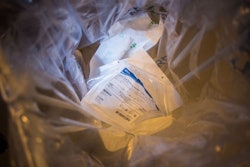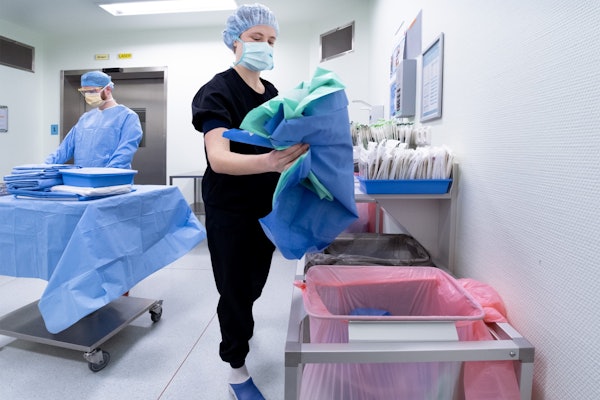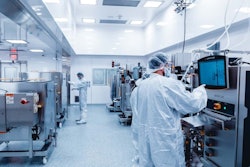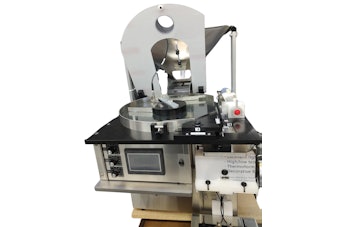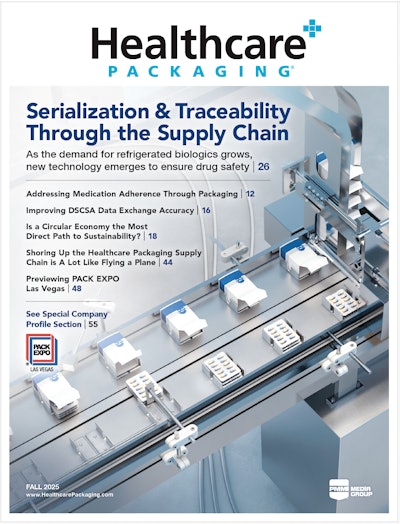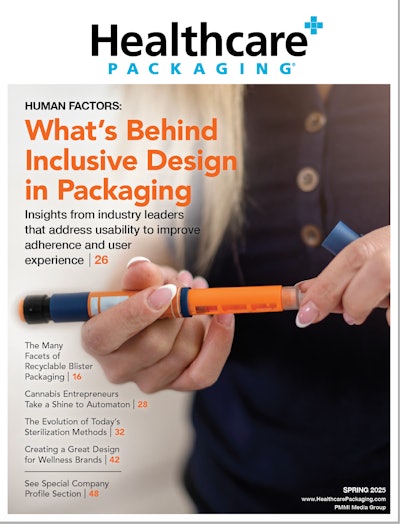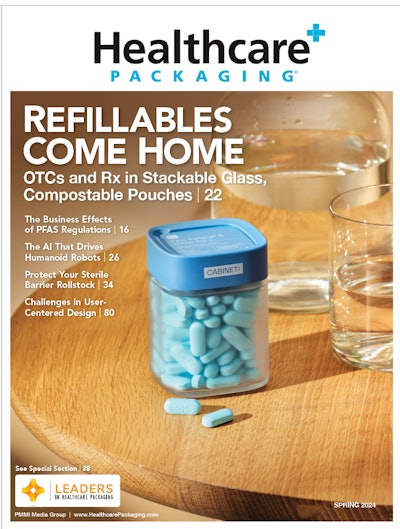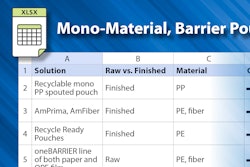
Key Takeaways:
· Hospital patients in the United States generate about 33.8 pounds of waste each day, which leads to about 6 million tons of waste annually.
· While there are still many challenges to recycling medical waste in hospitals, there have been successful partnerships.
· Zuyderland Medical Center in The Netherlands recently collaborated with SABIC, a global leader in the chemical industry, to help transform medical plastic waste into new contact sensitive packaging materials.
The topic of hospital waste is long debated and discussed as the industry grapples for a way to reduce the millions of tons of waste annually produced. According to a recent article in AMA Journal of Ethics, healthcare remains one of the largest waste-producing sectors. In fact, hospital patients in the United States generate about 33.8 pounds of waste each day, which leads to about 6 million tons of waste annually.
Much of the waste is due to single-use instruments, sterile medical device packaging, and other items generally used in operating rooms. According to the World Health Organization, of the total amount of waste generated by healthcare activities, about 85% is general, non-hazardous waste. The remaining 15% is considered hazardous material that may be infectious, toxic, carcinogen, flammable, corrosive, reactive, explosive, or radioactive. That means that roughly 85% of hospital waste could in theory be recycled, but is it?
According to Samantha Smith, head of KeeneySmith, a consulting company that provides sustainability and packaging services for healthcare, less that 1% is recycled. In a recent webinar I spoke with Smith while she was the director of Sustainability Stewardship at Medtronic. Today she runs KeeneySmith, a consulting agency that provides sustainability and packaging services for healthcare, focusing on strategy, design, life cycle assessment and circularity across the entire value chain.
She talked about the lack of recycling in hospitals today (less than 1% globally) and the three main challenges that healthcare facilities face as they try to remedy this problem. Not surprisingly, the first challenge is having the space in the OR for the recycling bins themselves.
“In an OR, you have your sterile area, your non-sterile area, your mayo stand, surgeons, nurses, anesthesiologist, extra equipment if needed,” says Smith. “One of the biggest issues is having multiple bins.”
Ideally there would be a bin for plastic, one for paper, and one for metal; but these would take up precious operating room space. Smith say that the hospitals need a one-bin solution, which doesn’t exist today.
Another challenge is that while many materials may be recyclable, they are not easily recyclable in hospitals. They may require a special pick up or drop off that adds a layer of work to the process. And lastly, there is the issue of some of the waste being a biohazard, which of course, makes it non-recyclable, and in fact could contaminate the recyclable materials that it encounters.
Listen in to part of our conversation here:
Success stories
Sustainable solutions for hospital waste include source reduction through inventory management and using reusable items, proper waste segregation at the point of generation, enhanced recycling of non-hazardous materials, and implementing advanced disposal technologies like energy recovery, ozone treatment, or anaerobic digestion. Staff education, collaboration with certified recyclers, and utilizing closed-loop systems also play a crucial role in minimizing waste and its environmental impact. There are examples of hospital and other health facilities taking charge of their recycling by implementing such solutions.
In the Netherlands, Zuyderland Medical Center recently collaborated with SABIC, a global leader in the chemical industry, to help transform medical plastic waste into new contact sensitive packaging materials. In collaboration with converters, Coveris and ACE, and brand owners Artivion and Mölnlycke Health Care, these project partners have successfully proven the concept of recycling used medical plastic back into the medical materials stream in two innovative pilot projects.
Staff at Zuyderland launched a medical plastic waste collection program in June 2024 to help address unmet needs and challenges of plastic waste that would otherwise be incinerated.
“A vascular surgeon, sustainability coordinator, and strategic purchaser realized that chemical recycling of uncontaminated plastic waste from the operating room, which would otherwise have been sent for incineration, could be a solution for reducing CO2 emissions for the Zuyderland hospital,” says Ruben Nouwens, Strategic Buyer Zuyderland Medical Center. “A different approach to waste flows, together with SABIC, the recycling industry, and the medical industry, has led to this unique result.”
 Mölnlycke ProcedurePak® including surgical drapes containing 49% recycled hospital-generated plastic waste, attributed using the mass balance approach.SABIC
Mölnlycke ProcedurePak® including surgical drapes containing 49% recycled hospital-generated plastic waste, attributed using the mass balance approach.SABIC
“To prove the concept, Zuyderland & SABIC focused on uncontaminated plastic waste in the operating room preparation area. In this phase of the operating room process, there is therefore no patient contact,” says Nouwens.
With the support of specialized transport company L’Ortye, the plastic waste was prepared and transported to SABIC to be converted into pyrolysis oil leveraging advanced recycling processes. SABIC then used this alternative feedstock to produce virgin-like certified circular polyethylene (PE).
“A separate waste stream has been operationalized by logistics and introduced to the operating room staff,” says Nouwens. “Collaboration with the recycling industry has resulted in new raw material for SABIC, which has been converted into film for the packaging- and medical industries. Thanks to advanced recycling processes, SABIC’s certified circular polymers are a drop-in solution for converters, with identical properties as polymers produced from traditional feedstock, therefore no new qualification is required.”
The two new healthcare applications that the circular polyethylene (PE) is used in are:
· Coveris produced packaging with 25% content attributed to recycled medical waste for Artivion’s guide wire used in vascular surgery.
· Mölnlycke Health Care produced surgical drapes with 49% content attributed to hospital-generated plastic waste to be delivered in the ProcedurePak® solution made with semi-finished product by ACE.
“Last year, we focused on a pilot project (proof of principle),” says Nouwens. “This pilot project once again underscored the magnitude of the plastic waste problem and also showed Zuyderland the potential of chemical recycling as a solution. And the potential of CO2 reduction of the hospital by diverting this plastic waste stream away from incineration.
 Artivion’s E-wire is used in catheter-based diagnostic and interventional procedures, sealed in packaging from Coveris produced with 25% content attributed to recycled medical waste using the mass balance approach.SABIC
Artivion’s E-wire is used in catheter-based diagnostic and interventional procedures, sealed in packaging from Coveris produced with 25% content attributed to recycled medical waste using the mass balance approach.SABIC
“The ultimate goal is to eventually process contaminated medical packaging materials,” continues Nouwens. “To achieve this, the waste must first be cleaned and sorted effectively and (cost-)efficiently. This is an integral part of the scientific research supervised by the Faculty of Medicine and Life Sciences of the University of Maastricht.”
Here in the states, a pilot brought together B. Braun Medical, Lehigh Valley Health Network, and PureCycle Technologies, with support from local recycling and consulting partners, to test recycling of polypropylene (PP) medical plastics in a healthcare setting. The goal was to identify and overcome barriers in collection, processing, logistics, and quality standards, while balancing patient care, safety, cost, and environmental impact.
Key findings and challenges from the pilot include:
· Difficulty in material identification and mixed‐material components; the need for better design for recyclability and elimination of contaminating polymers like PVC.
· Limited space, staff constraints, and safety concerns (e.g. liquids, biohazards) make in-hospital collection and densification challenging.
· Logistics and reverse-transport costs are often prohibitive due to lack of nearby recyclers able or willing to process medical plastics.
· Advanced and automated sorting technologies can help, but both mechanical and molecular recycling require input of relatively high quality to be efficient.
· The cost competitiveness of recycled resin is under pressure, especially when virgin plastic remains relatively cheap; scaling volume and improving efficiency are essential for viability.
· Training and staff turnover are critical factors; consistent participation depends on continuous education, feedback loops, and alignment among hospitals, recyclers, and logistics partners.
Overall, the pilot emphasized that to scale medical plastic recycling, stakeholders must collaborate across design, supply chain, operations, and training domains to make the process safe, practical, and economically sustainable. But a successful program is possible.
Back over in the Netherlands, on Friday, September 19, 2025, vascular surgeon Professor Bouwman successfully performed the first procedure using chemically recycled surgical drapes in the Zuyderland operating room.
“This marks a breakthrough, not a concept, but a groundbreaking and real-world use case,” concludes Nouwens.



